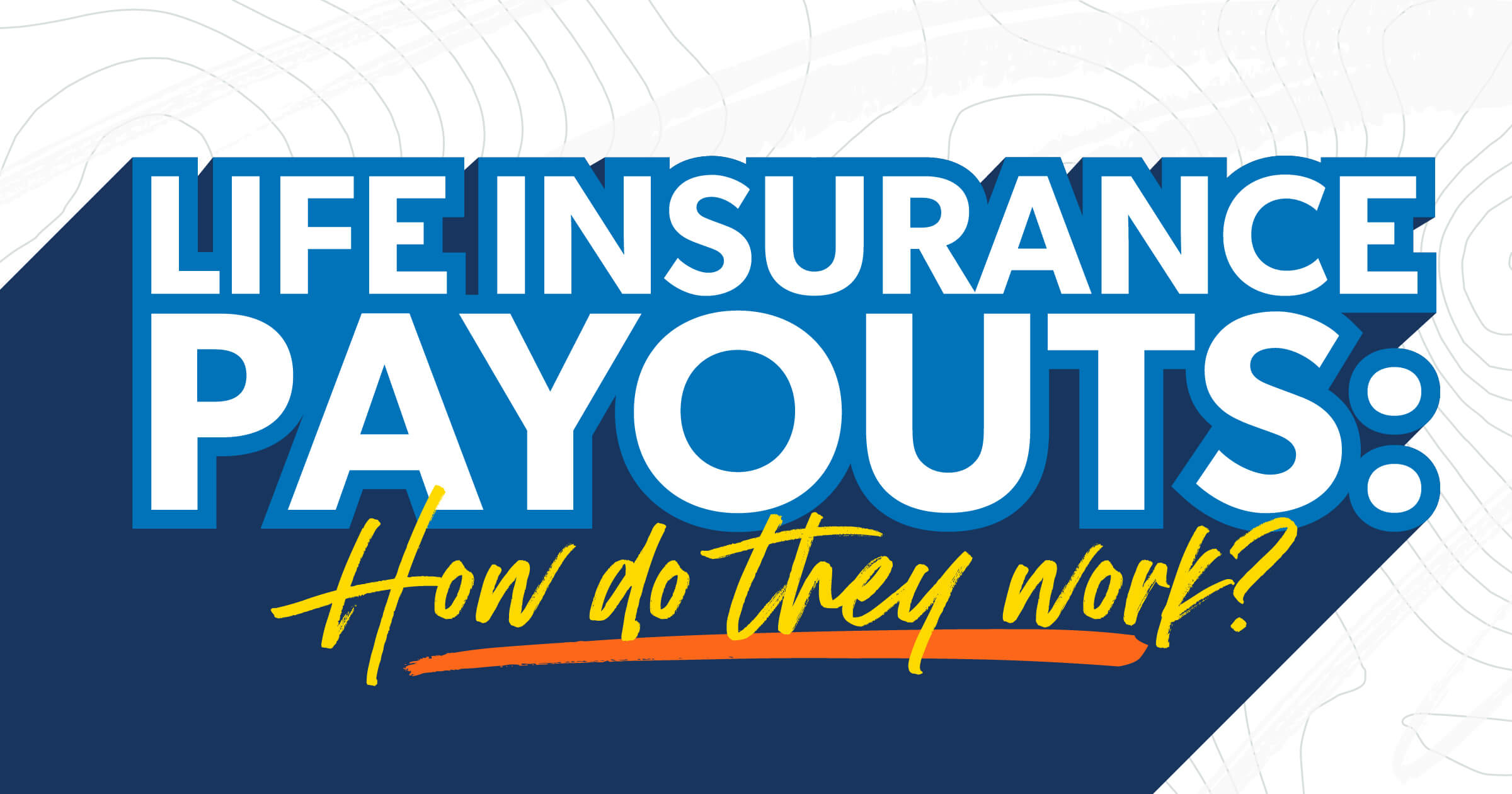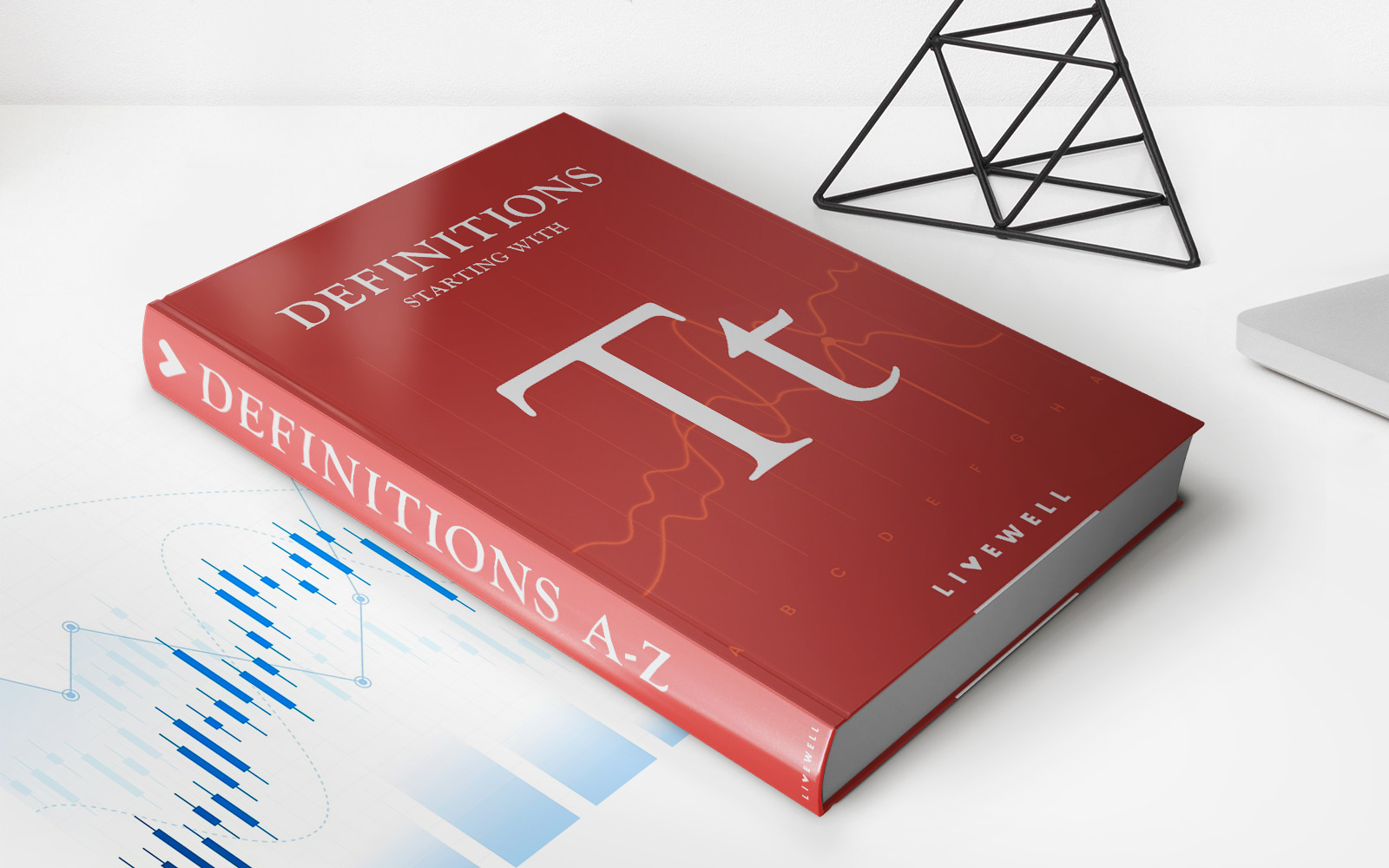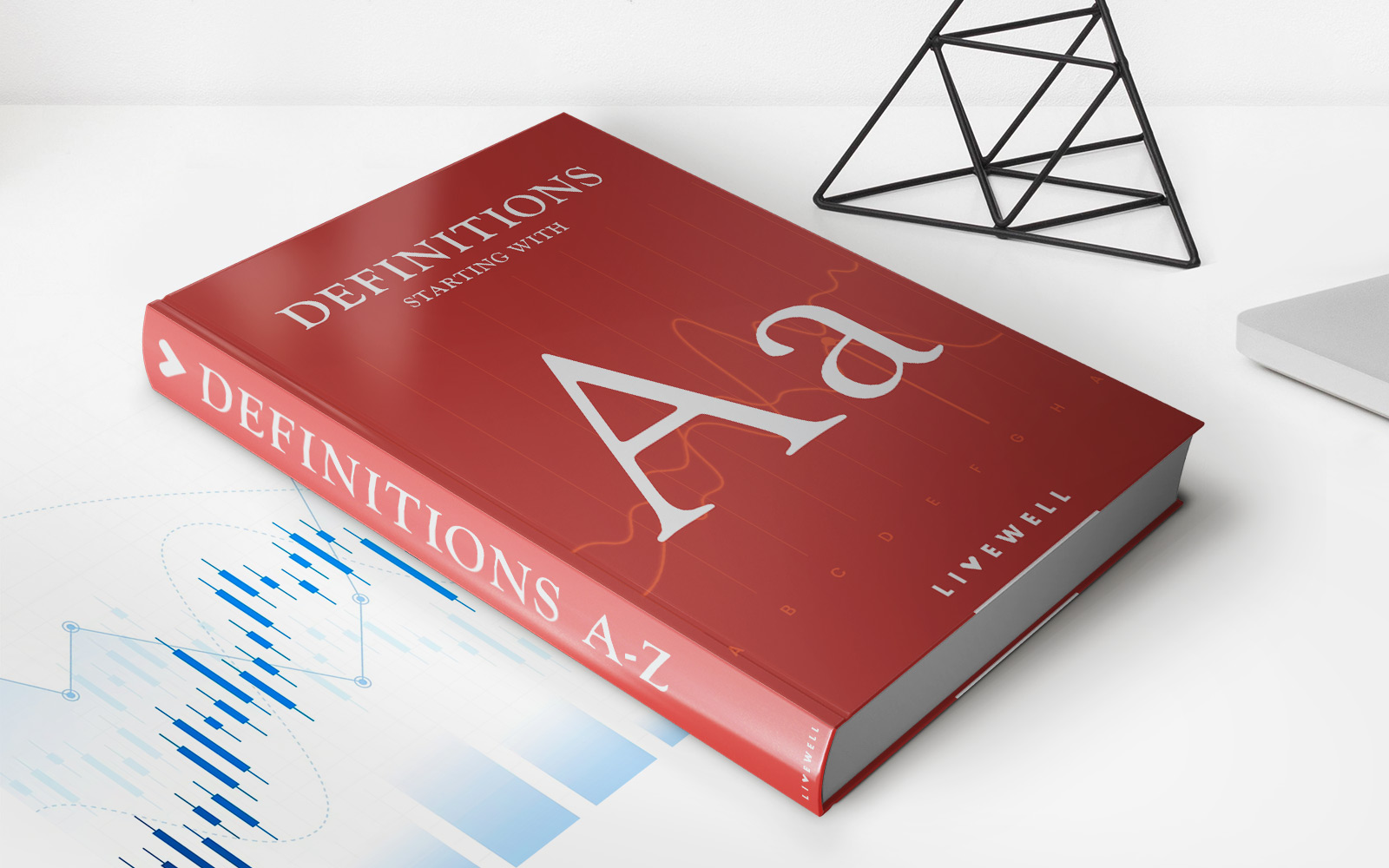Home>Finance>How Long Does It Take For Insurance To Pay Out After A Fire?


Finance
How Long Does It Take For Insurance To Pay Out After A Fire?
Published: November 16, 2023
Learn how long it typically takes for insurance to payout after a fire and get your finances back on track quickly. Don't wait for financial recovery!
(Many of the links in this article redirect to a specific reviewed product. Your purchase of these products through affiliate links helps to generate commission for LiveWell, at no extra cost. Learn more)
Table of Contents
- Introduction
- Understanding the Insurance Claim Process
- Initial Assessment of the Fire Damage
- Investigation by the Insurance Company
- Waiting Period for the Insurance Payout
- Factors Affecting the Length of Time for Payout
- The Role of Public Adjusters
- Finalizing the Insurance Claim
- Rebuilding and Restoration Process
- Conclusion
Introduction
Experiencing a fire in your home or business can be devastating. Not only do you have to deal with the emotional toll of the event, but you also have the daunting task of filing an insurance claim to cover the damages. One of the most common questions people have during this process is: “How long does it take for insurance to pay out after a fire?”
Unfortunately, there is no one-size-fits-all answer to this question. The timeline for receiving an insurance payout after a fire can vary depending on several factors including the complexity of the claim, the insurance company’s policies, and the extent of the damage. In some cases, the process can be relatively quick and straightforward, while in others, it may take weeks or even months to receive the funds needed to begin rebuilding and restoring your property.
In this article, we will walk you through the insurance claim process after a fire, helping you understand what to expect and how long it may take to receive the insurance payout.
Before we dive into the timeline, it’s crucial to understand that every insurance claim is unique. The specific details of your policy, the severity of the fire, and the actions you take throughout the process can all influence the length of time it takes to receive your payout. However, by gaining a general understanding of the steps involved, you can better navigate the process and make informed decisions along the way.
Understanding the Insurance Claim Process
When it comes to filing an insurance claim after a fire, it’s essential to have a solid understanding of the insurance claim process. This will help ensure that you are prepared and have realistic expectations regarding the timeline for receiving your payout.
The first step in the insurance claim process is to contact your insurance company and inform them about the fire. They will then assign you an insurance adjuster who will be responsible for assessing the damage and determining the payout amount.
Once the insurance company receives your claim, they will likely send an adjuster to your property to conduct an initial assessment. The adjuster will evaluate the extent of the fire damage, document any losses, and gather evidence to support your claim. This may involve taking photographs, videos, and statements from witnesses.
After the initial assessment, the insurance company will conduct an investigation to verify the cause of the fire and ensure that you have provided accurate information. This investigation may involve a review of the fire department’s report, interviews with witnesses, and examination of any available evidence.
During the investigation, it’s crucial to be cooperative and provide the insurance company with any requested documents or information promptly. This will help expedite the process and prevent any unnecessary delays.
Once the investigation is complete, the insurance company will review all the evidence gathered and determine the coverage amount for your claim. This may involve consulting with experts, such as contractors or appraisers, to assess the cost of repairing or replacing the damaged property.
It’s important to note that the insurance company may request additional documentation or information during this stage, which can prolong the process. It’s crucial to stay in regular communication with your insurance adjuster and provide any requested documents or clarification promptly.
Once the insurance company has made a decision on your claim and determined the payout amount, they will issue a check or transfer the funds to your designated account. However, keep in mind that there may be a waiting period before you receive the actual payout.
It’s important to read the terms and conditions of your insurance policy to understand any waiting periods or other conditions that may affect the timing of your payout. In some cases, there may be a specified timeframe, such as 30 to 60 days, before the insurance company processes the payout.
Understanding the insurance claim process and the potential timelines involved can help you manage your expectations and navigate the process more efficiently. By being proactive, cooperative, and staying in regular communication with your insurance adjuster, you can help expedite the payout process and begin rebuilding and restoring your property sooner.
Initial Assessment of the Fire Damage
After a fire incident, the insurance company will send an adjuster to your property to conduct an initial assessment of the fire damage. This assessment is a crucial step in the insurance claim process, as it determines the extent of the damage and forms the basis for the insurance payout.
During the initial assessment, the insurance adjuster will thoroughly inspect your property, both inside and outside. They will assess the damage to the structure, as well as any personal belongings and belongings within the property. The adjuster will take photographs, videos, and detailed notes to document the extent of the fire damage. It’s important to accompany the adjuster during the assessment and provide any necessary access to the property.
The adjuster will make a detailed inventory of the damaged items and estimate the cost of repairs or replacement. They will also evaluate any additional costs that may arise from the fire, such as temporary housing and living expenses if you are unable to reside in the property during the restoration process.
It’s important to be thorough during the initial assessment and provide the adjuster with all the necessary information. Make sure to point out any hidden damage or areas that may require special attention. The more detailed and accurate the initial assessment is, the smoother the claim process will be.
Once the initial assessment is complete, the adjuster will compile all the information and submit it to the insurance company. The insurance company will then review the assessment and determine the coverage amount for your claim.
It’s worth noting that the initial assessment is not the final determination of the insurance payout. The insurance company may conduct further investigations or request additional documentation before making a final decision. However, the initial assessment provides a foundation for the claim and gives the insurance company an initial understanding of the damages.
Keep in mind that it’s important to document the fire damage yourself as well. Take photographs and videos of the affected areas and damaged belongings before any cleanup or restoration work begins. This documentation will serve as additional evidence and can help in case of any disputes or discrepancies during the claim process.
By ensuring a thorough initial assessment of the fire damage, you can help establish a strong foundation for your insurance claim and ensure a fair and accurate payout for the damages incurred.
Investigation by the Insurance Company
When you file an insurance claim after a fire, the insurance company will conduct an investigation to verify the cause of the fire and ensure that you have provided accurate information. The goal of this investigation is to protect the insurance company’s interests and prevent fraudulent claims.
The investigation process may involve several steps, including:
- Reviewing the fire department’s report: The insurance company will carefully examine the report provided by the fire department. This report will contain crucial details about the cause and extent of the fire. It will help the insurance company verify the cause of the fire and determine if it is covered under your policy.
- Interviewing witnesses: The insurance company may conduct interviews with witnesses who were present at the scene of the fire. These interviews help gather additional information and establish a timeline of events leading up to the fire.
- Examining physical evidence: If necessary, the insurance company may hire forensic experts to examine physical evidence from the scene of the fire. This could include analyzing fire patterns, electrical systems, or any other potential factors that may have contributed to the fire.
- Assessing your claim documentation: The insurance company will carefully review the documentation you provided with your claim, including photographs, videos, invoices, and receipts. They may request additional documentation or clarification if needed.
- Verifying the accuracy of your claim: The insurance company will cross-reference the information you provided with any available public records, such as property records or previous claims history. This helps ensure that your claim is accurate and reflects the true value of the damages.
It’s essential to cooperate fully with the insurance company during the investigation process. Provide any requested documents or information promptly and honestly. Failure to cooperate or provide false information can result in the denial of your claim.
Depending on the complexity of the investigation and the availability of resources, the timeline for this process can vary. It could take several weeks or even months for the insurance company to complete their investigation and reach a decision on your claim.
During the investigation period, it’s vital to maintain regular communication with your insurance adjuster. Keep them updated on any new information or developments regarding the claim and address any concerns they may have. Clear and open communication can help expedite the investigation process and ensure a timely resolution to your claim.
By conducting a thorough investigation, the insurance company aims to protect policyholders and ensure that claims are paid out accurately and in accordance with the terms of the policy. While the investigation process may introduce some delays, it is a necessary step to maintain the integrity of the insurance system.
Waiting Period for the Insurance Payout
After the initial assessment and investigation, you might be eager to receive the insurance payout to start rebuilding and restoring your property. However, it’s important to understand that there is usually a waiting period before you receive the actual funds from your insurance company.
The length of the waiting period can vary depending on several factors, including the insurance company’s policies, the complexity of the claim, and the extent of the fire damage. In some cases, the waiting period may be specified in your insurance policy, while in others, it may be determined by the insurance company’s internal processes.
Typically, the waiting period for an insurance payout after a fire can range from a few days to several weeks. During this time, the insurance company will review all the information gathered during the claim process, including the initial assessment, investigation, and any additional documentation provided. They will then calculate the coverage amount based on the terms of your policy and issue the payment.
During the waiting period, it’s crucial to stay in regular communication with your insurance adjuster. They can provide updates on the progress of your claim and inform you of any additional information or documentation needed. If there are any delays or issues that arise, the adjuster can help address them and work towards a resolution.
It’s worth noting that some insurance policies may offer an option for an expedited or advance payment. This is typically available for policyholders who have suffered significant losses and need immediate funds to cover emergency expenses or temporary housing. If you find yourself in this situation, discuss your options with your insurance adjuster to see if an advance payment is possible.
While waiting for the insurance payout, it’s important to take steps to mitigate any further damage to your property. This might include securing the property, removing debris, or starting the restoration process if it is safe to do so. Document any additional expenses or damages that occur during this period, as they may be eligible for reimbursement by the insurance company.
Remember that patience is key during the waiting period for the insurance payout. While it can be frustrating to wait, the insurance company needs time to review and process your claim accurately. By staying informed and cooperating with the insurance adjuster, you can help expedite the payout process and begin the necessary repairs and restoration as soon as possible.
Factors Affecting the Length of Time for Payout
Several factors can affect the length of time it takes to receive the insurance payout after a fire. While each insurance claim is unique, understanding these factors can help you manage your expectations and navigate the process more effectively.
1. Complexity of the claim: The complexity of the fire damage and the resulting insurance claim can significantly impact the timeline for receiving the payout. If the fire caused extensive damage to your property or involved multiple parties, such as neighboring properties or shared responsibility, it may take longer for the insurance company to assess the damages and determine the coverage amount.
2. Insurance company’s internal processes: Each insurance company has its own internal processes and procedures for handling claims. This can include how they assign adjusters, review documentation, conduct investigations, and approve payouts. Some insurance companies may have more streamlined processes, leading to quicker payouts, while others may have additional layers of review or require more documentation, resulting in longer processing times.
3. Documentation and information provided: The accuracy, completeness, and timeliness of the documentation and information provided to the insurance company can directly impact the length of time for the payout. If there are missing documents, discrepancies in the information provided, or delays in providing requested information, it can prolong the claim process as the insurance company may need to follow up or conduct further investigation.
4. Waiting periods specified in the insurance policy: Some insurance policies have specific waiting periods before the insurance company can process and issue the payout. These waiting periods can range from a few days to several weeks and are outlined in the terms and conditions of the policy. It’s important to review your policy to understand if there are any waiting periods that may impact the timeline for receiving your insurance payout.
5. Disputes or disagreements: In some cases, there may be disputes or disagreements between the policyholder and the insurance company regarding the coverage, value of the damages, or other aspects of the claim. These disputes can introduce additional delays as they may require further negotiation, documentation, or even legal proceedings to reach a resolution.
6. External factors: External factors such as the overall volume of claims your insurance company is processing, natural disasters, or other widespread events can affect the length of time for the payout. In times of high claim volumes or when resources are stretched thin due to a large-scale event, insurance companies may experience delays in processing claims.
It’s important to keep in mind that while these factors can influence the length of time for the insurance payout, staying proactive and maintaining regular communication with your insurance adjuster can help expedite the process. Providing accurate and timely documentation, responding promptly to requests for information, and following up with the insurance company can all help move the claim forward more efficiently.
Understanding these factors and having realistic expectations can help ease the stress of waiting for the insurance payout after a fire. While it may require patience, staying engaged and proactive in the process can ultimately lead to a faster resolution and the necessary funds to begin rebuilding and restoring your property.
The Role of Public Adjusters
Dealing with an insurance claim after a fire can be overwhelming, especially when navigating the complexities of the process. This is where public adjusters come in. Public adjusters are licensed professionals who can assist policyholders in preparing, filing, and negotiating their insurance claim on their behalf.
Public adjusters work independently from the insurance company and advocate for the policyholder’s interests. Their role is to ensure that the policyholder receives a fair and accurate settlement for their fire damage.
Here are some key roles and responsibilities of public adjusters:
1. Assessing the damages: Public adjusters conduct a thorough assessment of the fire damage to your property. They evaluate the structural damage, determine the value of destroyed or damaged belongings, and calculate the overall impact of the fire on your property.
2. Documenting the claim: Public adjusters take charge of documenting your insurance claim. They gather the necessary evidence, including photographs, videos, and written inventory of damaged items. Their expertise in claim documentation helps ensure that all relevant damages are included in the claim, maximizing the chances for a fair settlement.
3. Negotiating with the insurance company: Public adjusters act as your advocate during the negotiation process with the insurance company. They have a deep understanding of insurance policies, coverage limits, and the nuances of the claims process. Their expertise allows them to effectively negotiate with the insurance company, pushing for the best possible outcome for you.
4. Expediting the claim process: Public adjusters are experienced in handling insurance claims and understand the necessary steps to expedite the process. They help streamline the claim submission and follow up with the insurance company to ensure it progresses efficiently. This can help reduce the waiting period for the insurance payout.
5. Providing expertise and guidance: Public adjusters have extensive knowledge of insurance policies, regulations, and industry practices. They help policyholders understand their rights and ensure that they receive the maximum coverage entitled to them under their policy. They can also guide you through the complex terminology and procedures involved in insurance claims, making the process less overwhelming.
6. Handling disputes or discrepancies: If there are any disputes or discrepancies with the insurance company regarding the claim, public adjusters can mediate and resolve these issues. They have experience in dealing with insurance companies and can provide the necessary evidence or arguments to support your position.
It’s important to note that public adjusters work on a fee basis, typically a percentage of the settlement amount. While this can be an additional cost, their expertise and ability to maximize your claim can often result in a higher payout, making it a worthwhile investment.
Public adjusters can play a valuable role in navigating the insurance claim process after a fire. Their knowledge, expertise, and dedication to your best interests can help ensure that you receive a fair and equitable settlement for your fire damage, easing the financial burden of the recovery process and allowing you to focus on rebuilding and moving forward.
Finalizing the Insurance Claim
After going through the initial assessment, investigation, and negotiation process, the final step in the insurance claim process after a fire is to finalize the claim. This involves reaching an agreement with the insurance company on the coverage amount and terms of the settlement.
During the finalization process, the insurance company will review all the information and documentation provided by you and your public adjuster, if applicable. They will assess the value of the damages, consider any policy limits or exclusions, and take into account any previous negotiations or discussions.
The insurance company will then present their proposal for the settlement amount. This may be in the form of a written offer or a detailed breakdown of the coverage and reimbursement for damages. It’s important to carefully review this proposal and ensure that it aligns with the assessment of the fire damage and any agreements made during the negotiation process.
If you find that the settlement offer is insufficient or that certain damages are not adequately covered, you have the right to advocate for adjustments or provide additional supporting documentation. This is where the role of a public adjuster or legal counsel can be invaluable, as they can help you navigate the process and negotiate on your behalf.
Once you and the insurance company reach an agreement on the final settlement amount, you will need to sign a release or settlement agreement. This document acknowledges that you accept the settlement offer and agree not to pursue any further legal action or claims related to the fire damage.
Keep in mind that once the settlement is finalized and the release is signed, you will typically receive the insurance payout within a specified timeframe outlined by the insurance company. This could range from a few days to several weeks, depending on their internal processes and any waiting periods specified in your insurance policy.
It is crucial to carefully read and understand the terms of the settlement before signing the release. If there are any concerns or questions regarding the terms, it is advisable to seek legal advice to ensure that you are fully aware of the implications of accepting the settlement.
Once the insurance payout is received, you can begin the process of rebuilding and restoring your property. Keep in mind that you should maintain accurate records of all expenses related to the fire damage and the restoration process, as these may be eligible for reimbursement or coverage under your policy.
Finalizing the insurance claim is the last step in the process of recovering from a fire. By carefully reviewing the settlement offer, advocating for your rights, and ensuring that all agreements are in writing, you can achieve a fair and equitable resolution to your insurance claim, providing you with the necessary resources to move forward and rebuild your life after the fire.
Rebuilding and Restoration Process
After finalizing the insurance claim and receiving the payout, you can begin the crucial process of rebuilding and restoring your property following a fire. This stage involves coordinating various activities to ensure that your home or business can be restored to its pre-fire condition.
1. Engage contractors and professionals: Depending on the extent of the fire damage, you may need to hire contractors and professionals to handle the rebuilding and restoration process. This can include construction companies, electricians, plumbers, and other specialists who can address specific areas of damage. Make sure to obtain multiple quotes, check references, and ensure that the contractors and professionals you hire are licensed and insured.
2. Obtain necessary permits: Depending on the scope of the rebuilding and restoration work, you may need to obtain permits from the local authorities. This is important to ensure that the work is done according to building codes and regulations. Consult with your contractors or a local building department to determine which permits are required and how to obtain them.
3. Remove damaged materials: Before any construction or restoration work can begin, it’s important to remove all damaged materials that cannot be salvaged. This may include debris, charred wood, and items severely affected by the fire. Proper disposal of these materials is critical to ensure the safety and cleanliness of the work area.
4. Structural repairs: Depending on the extent of the fire damage, structural repairs may be necessary. This could involve fixing damaged walls, roofs, floors, or other structural elements. It’s crucial to work with experienced contractors who understand the specific challenges and requirements of repairing fire-damaged structures.
5. Electrical and plumbing restoration: Fire damage can also impact electrical and plumbing systems within the property. It’s essential to have licensed professionals inspect and restore these systems to ensure they meet safety standards and work properly.
6. Cleaning and smoke odor removal: Fire damage often leaves behind soot, smoke residue, and lingering odors. Thorough cleaning and odor removal are critical steps in the restoration process. This may involve professional cleaning services that specialize in fire damage cleanup.
7. Replace damaged belongings: As the rebuilding process progresses, you can also start replacing damaged belongings, such as furniture, appliances, and personal items. Document all purchases and keep receipts for insurance purposes.
8. Implement preventive measures: As part of the restoration process, consider implementing preventive measures to reduce the risk of future fires. This can include installing smoke detectors, fire extinguishers, and ensuring that fire safety measures are up to code.
Throughout the rebuilding and restoration process, maintain open communication with your insurance company and provide updates on the progress. Document all expenses related to the restoration work, including invoices, receipts, and any additional costs incurred.
Remember that the restoration process may take time, depending on the extent of the damage and the availability of contractors and materials. Patience and careful planning are essential to ensure that the work is done thoroughly and efficiently.
By working with experienced professionals, adhering to building codes and regulations, and documenting all aspects of the restoration process, you can successfully rebuild and restore your property after a fire.
Conclusion
Experiencing a fire in your home or business is a traumatic event, but understanding the insurance claim process can help ease the burden of recovery. While the timeline for receiving an insurance payout after a fire can vary, there are steps you can take to navigate the process more effectively.
From the initial assessment of fire damage to the investigation by the insurance company, each stage of the claim process plays a critical role in determining the coverage amount and timeline for payout. Factors such as the complexity of the claim, the insurance company’s internal processes, and the documentation provided can affect the length of time for the payout.
Public adjusters can be valuable allies, providing expertise and guidance as they advocate for your best interests throughout the claim process. Their knowledge and negotiation skills can help ensure that you receive a fair and accurate settlement for the fire damage.
Once the insurance claim is finalized and the payout is received, the focus shifts to the rebuilding and restoration process. Engaging reputable contractors, obtaining necessary permits, and addressing structural repairs are crucial steps in returning your property to its pre-fire condition.
It’s important to remain patient and maintain open communication with your insurance adjuster and contractors throughout the entire process. Keep detailed records of all expenses, document the restoration progress, and adhere to building codes and regulations.
While the recovery process can be challenging, it’s also an opportunity for renewal. By taking the necessary steps and working with professionals, you can emerge from the fire stronger, with a restored property and a renewed sense of security.
Remember, every insurance claim is unique, and it’s essential to consult your insurance policy and work closely with your insurance company or public adjuster to understand the specific terms and conditions. By staying informed and proactive, you can navigate the insurance claim process with confidence and move forward towards rebuilding your life after a fire.














